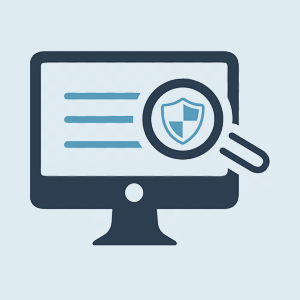 The rise of remote work has become a transformative force. While this shift offers unprecedented flexibility and productivity gains, it also introduces new challenges, particularly in terms of security. Securing remote endpoints and devices has become paramount for companies aiming to protect sensitive data, maintain operational integrity, and mitigate potential threats. This article explores the importance of securing remote endpoints, provides actionable strategies, and introduces helpful tools and third-party services that companies can leverage.
The rise of remote work has become a transformative force. While this shift offers unprecedented flexibility and productivity gains, it also introduces new challenges, particularly in terms of security. Securing remote endpoints and devices has become paramount for companies aiming to protect sensitive data, maintain operational integrity, and mitigate potential threats. This article explores the importance of securing remote endpoints, provides actionable strategies, and introduces helpful tools and third-party services that companies can leverage.
Importance of Securing Remote Endpoints and Devices
- Data Protection: Remote endpoints often handle sensitive corporate data, customer information, and proprietary materials. Failing to secure these devices can result in data breaches, leading to significant financial losses, damage to reputation, and legal consequences.
- Mitigating Cyber Threats: Remote devices are susceptible to a variety of cyber threats, including malware, phishing attacks, and ransomware. Without proper security measures, these threats can compromise the entire network, disrupting operations and causing irreparable damage.
- Regulatory Compliance: Many industries are subject to strict regulations regarding the protection of sensitive information. Failing to secure remote endpoints can lead to non-compliance with these regulations, exposing companies to fines and legal actions.
- Maintaining Operational Continuity: Securing remote endpoints is crucial for ensuring operational continuity. A security breach on a single device can potentially lead to network-wide disruptions, impacting productivity and business processes.
How to Secure Remote Endpoints and Devices
- Implement Robust Endpoint Security Solutions: Utilize comprehensive endpoint security solutions that include antivirus software, firewalls, and intrusion detection systems. Regularly update and patch these tools to ensure protection against the latest threats.
- Enforce Strong Authentication Protocols: Implement multi-factor authentication (MFA) to add an extra layer of security. This ensures that even if credentials are compromised, unauthorized access remains challenging.
- Encrypt Data in Transit and at Rest: Employ encryption protocols to secure data both during transmission and while stored on devices. This safeguards information from interception and unauthorized access, even if a device is lost or stolen.
- Establish a Remote Device Management Policy: Develop and enforce a clear policy for remote device management. This includes guidelines for acceptable use, regular updates, and reporting of lost or stolen devices.
- Educate Employees on Security Best Practices: Conduct regular training sessions to educate employees about potential security threats, the importance of strong passwords, and how to recognize and avoid phishing attempts.
Tools and Third-Party Services for Remote Endpoint Security
- Mobile Device Management (MDM) Solutions: MDM solutions allow organizations to manage and secure mobile devices remotely. They provide capabilities such as device tracking, remote data wipe, and application management.
- Virtual Private Networks (VPNs): VPNs create a secure and encrypted connection between remote devices and the corporate network. This helps protect data from interception while traversing public networks.
- Endpoint Detection and Response (EDR) Solutions: EDR solutions monitor and respond to advanced threats on endpoints. They offer real-time visibility into endpoint activities and facilitate swift responses to potential security incidents.
- Cloud Security Services: As many organizations adopt cloud services, leveraging cloud security solutions becomes essential. These services often include features like data loss prevention, threat intelligence, and access controls.
- Security Information and Event Management (SIEM) Systems: SIEM systems collect and analyze security data from various sources to detect and respond to security incidents. They provide centralized visibility into the security posture of an organization.
Conclusion
Securing remote endpoints and devices is a critical component of modern cybersecurity strategies. By understanding the importance of this task and implementing robust security measures, companies can protect sensitive data, mitigate cyber threats, and ensure the continued success of their remote work initiatives. Leveraging a combination of in-house policies, best practices, and cutting-edge tools, organizations can navigate the complexities of the remote work landscape while safeguarding their assets and maintaining operational resilience.
